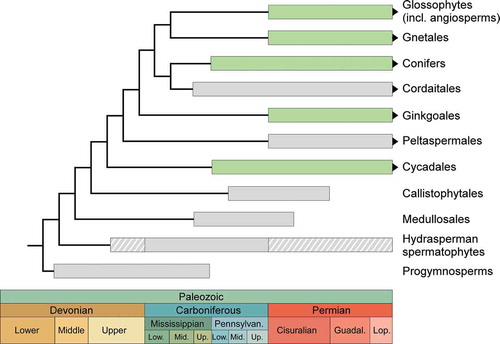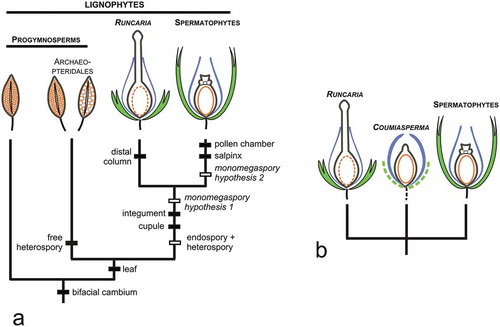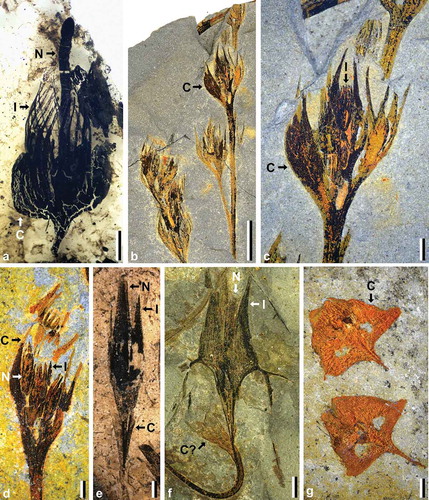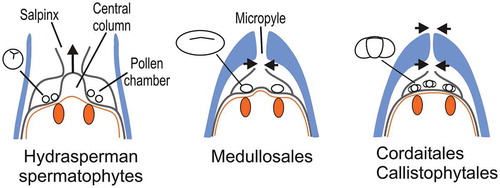Figures & data
Figure 1. Simplified phylogenetic tree of Palaeozoic lignophytes (progymnosperms and spermatophytes). Stratigraphic ranges of extant taxa are in green. Hatched parts of the hydrasperman spermatophytes stratigraphic range are debatable.

Figure 2. (a): Origin of the seed habit; hypothetical acquisition of characters indicated in white. (b): Hypothetical relationships between Runcaria, Coumiasperma and the spermatophytes; unknown characters in dotted lines.

Figure 3. Diversity of ovules in the earliest spermatophytes from the Devonian of Belgium. (a): Runcaria heinzelinii Stockmans, isolated proto-ovule; (b-d), Moresnetia zalesskyi Stockmans; (b): distal part of the dichotomous seed-bearing system showing several cupules; (c,d): cupules with preserved ovules; (e): Pseudosporogonites bertrandii (Stockmans) Prestianni et al. showing its collaret cupule; (f): Dorinnotheca streelii Fairon-Demaret showing a putative collaret cupule; (g): two Condrusia rumex Stockmans specimens showing their cupule consisting of two leaf-like segments closely adpressed against each other. C = cupule; I = integument; N = nucellus. Scale bars in a, c-f: 1 mm; in b: 5 mm; in g: 2 mm.



